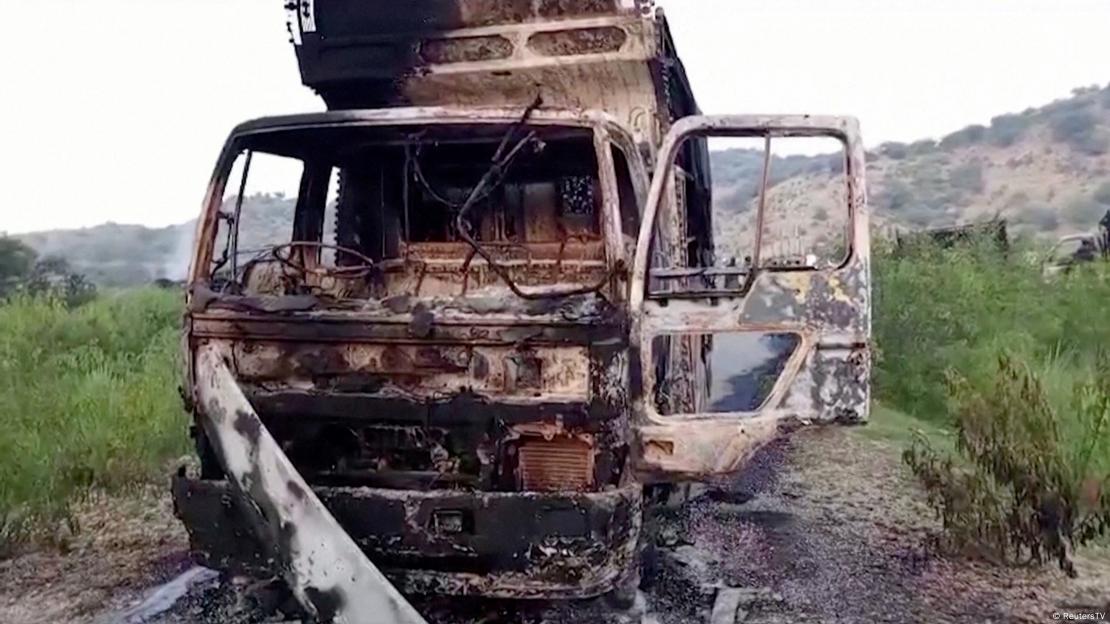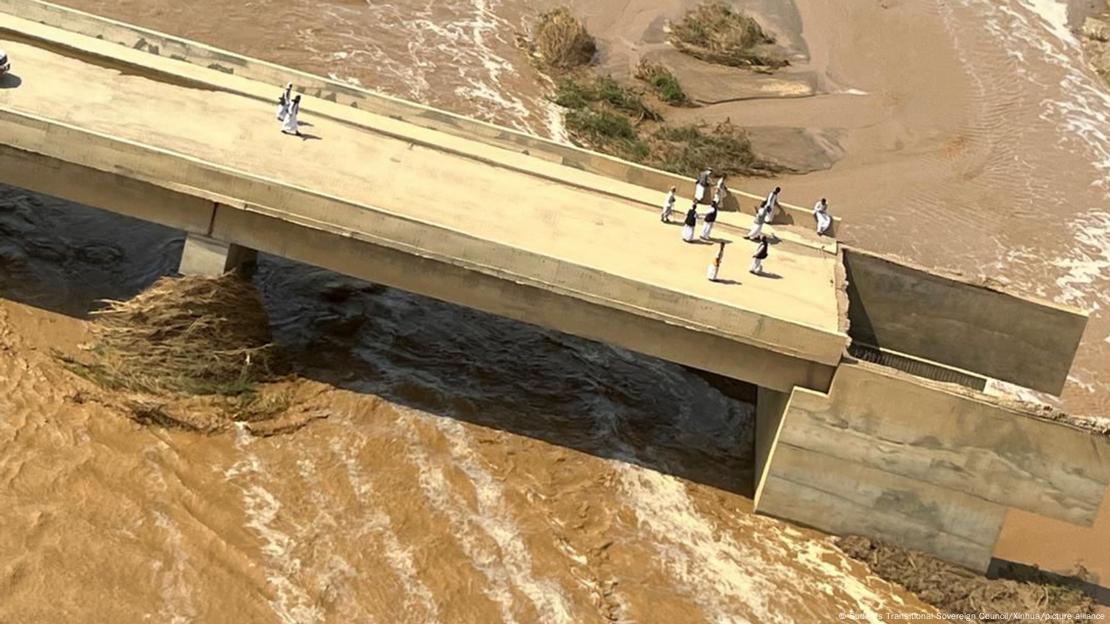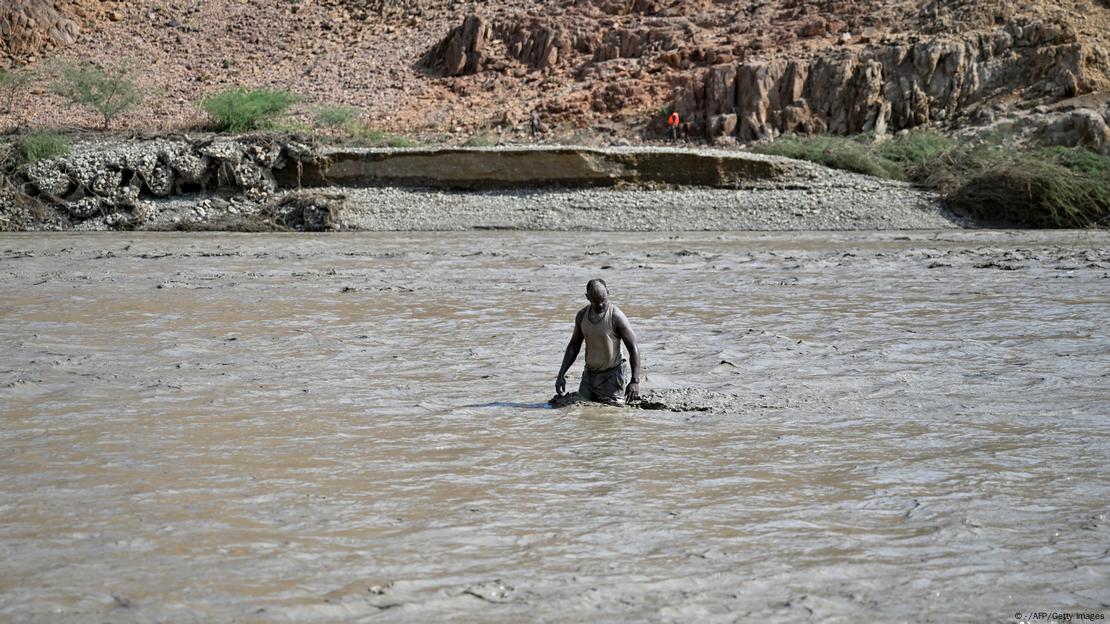Indian police fired tear gas and water cannon at protesters who gathered in Kolkata to demand justice for a female medic who was raped and killed earlier this month.

Police have arrested several demonstrators and accused them of trying to orchestrate large-scale violence

Police have arrested several demonstrators and accused them of trying to orchestrate large-scale violence
Image: Prabhakar Mani Tewari/DW
Thousands of protesters in the eastern Indian city of Kolkata were dispersed with tear gas and water cannon on Tuesday, as they marched over the rape and killing of a female doctor earlier this month.
Protesters are demanding the resignation of Mamata Banerjee, the chief minister of West Bengal state, for what they describe as the mishandling of the investigation into the case.
They have also accused Banerjee's government of creating an unsafe environment for women that allowed for the doctor's murder to occur.
So far, one man has been detained over the crime. The suspected attacker had worked as a civic volunteer with the local police.
But the family of the victim has alleged it was a gang rape case and that more individuals were likely involved.
At Tuesday's rally, police officers pushed back the demonstrators, firing tear gas and water cannon. Several student activists were arrested ahead of the protest, police said.
They have been accused of trying to orchestrate large-scale violence.
What do we know about the case?
The 31-year-old doctor's body was discovered at a state-run hospital in Kolkata on August 9. She was reportedly found in the hospital's seminar hall, suggesting she had gone there for a break during her 36-hour shift.
The murder sparked huge protests, with police clashing with demonstrators from the ruling Bharatiya Janata Party (BJP) angry at the state government, which is run by the opposition party.
Doctors' associations in many cities across India launched strikes in response to the crime. The actions cut off nonessential services, though medical professionals have since returned to work.
The murder has triggered widespread outrage in India, where an average of nearly 90 rapes are reported each day in 2022, in a country with 1.4 billion people.
jcg/nm (AP, AFP)
Thousands of protesters in the eastern Indian city of Kolkata were dispersed with tear gas and water cannon on Tuesday, as they marched over the rape and killing of a female doctor earlier this month.
Protesters are demanding the resignation of Mamata Banerjee, the chief minister of West Bengal state, for what they describe as the mishandling of the investigation into the case.
They have also accused Banerjee's government of creating an unsafe environment for women that allowed for the doctor's murder to occur.
So far, one man has been detained over the crime. The suspected attacker had worked as a civic volunteer with the local police.
But the family of the victim has alleged it was a gang rape case and that more individuals were likely involved.
At Tuesday's rally, police officers pushed back the demonstrators, firing tear gas and water cannon. Several student activists were arrested ahead of the protest, police said.
They have been accused of trying to orchestrate large-scale violence.
What do we know about the case?
The 31-year-old doctor's body was discovered at a state-run hospital in Kolkata on August 9. She was reportedly found in the hospital's seminar hall, suggesting she had gone there for a break during her 36-hour shift.
The murder sparked huge protests, with police clashing with demonstrators from the ruling Bharatiya Janata Party (BJP) angry at the state government, which is run by the opposition party.
Doctors' associations in many cities across India launched strikes in response to the crime. The actions cut off nonessential services, though medical professionals have since returned to work.
The murder has triggered widespread outrage in India, where an average of nearly 90 rapes are reported each day in 2022, in a country with 1.4 billion people.
jcg/nm (AP, AFP)
















 Health officials at Sarasota County Mosquito Management Services study specimens of anopheles mosquitoes that cause malaria, in Sarasota, Florida © CHANDAN KHANNA / AFP/File
Health officials at Sarasota County Mosquito Management Services study specimens of anopheles mosquitoes that cause malaria, in Sarasota, Florida © CHANDAN KHANNA / AFP/File